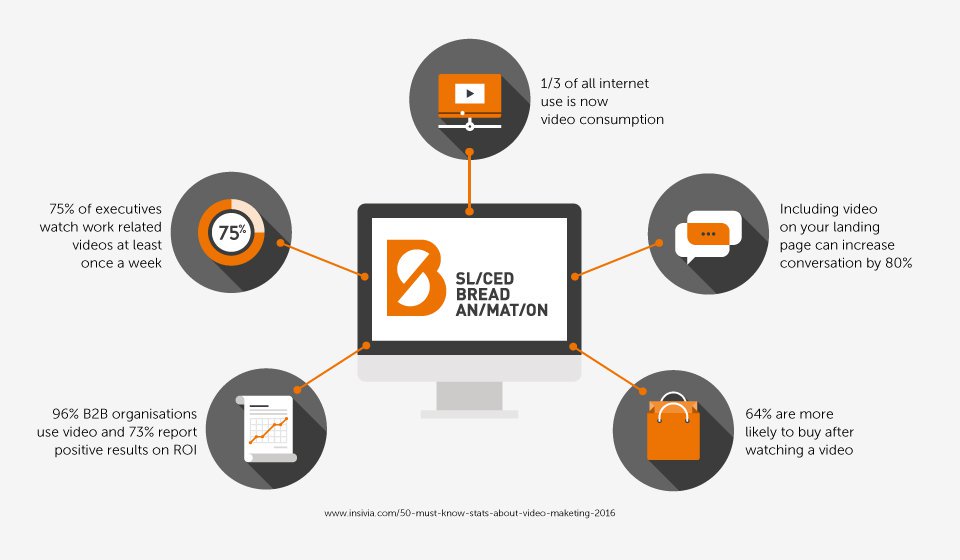It’s no secret that consumers love video content. The number of online videos views accumulates exponentially year-on-year. Google acknowledges the power of video by consistently ranking this media where it is most visible in search results.
If you run an online business today, it’s difficult to ignore the power of video content. Cisco predict video will account for 70% of all online traffic by 2020. The Visual Networking Index estimates there will be three trillion minutes of video watched every month.
Digital platforms invite businesses to publish videos. Social media networks are a hot-bed for video content and with smartphones driving video views, brands that ignore video risk being left out of the conversation.
The dominance of video content is already evident in search engines. Research conducted by Stonetemple reveals YouTube, unsurprisingly, ranks consistently in Google’s top ten search results:
- 88% of videos in the top 10 are from YouTube
- 89.6% rank in the top 30
- Embedded videos are evenly spread throughout the top 30
YouTube is not dominant just because it is owned by Google. There could be some bias of course, but the figures support there is justification for YouTube to rank so well. The media platform is even the most watched video channel in Asia Pacific – other than China, on account it is banned there.
How do videos rank in Google
Google is intent on providing end-users the best results that match their search query. Furthermore, the search engine giant knows that video content is so popular with consumers the company has dedicated the media format its very own filter.
Even independent of the filter, videos nearly always appear towards the top of Google searches. And the more Google knows about the content of the video, the more accurately it can predict how suitable the video is for the end-user.
Consumers actively search for videos by including specific terms in search criteria. Queries that generate video content typically include one of the following:
- [keyword] video clips
- how to [keyword]
- [keyword] tutorial
- [title] video game review
- Tour of [city]
- [movie title] review
In order for relevant keywords to match search queries, marketers need to position videos in search engines. You do this by updating relevant fields that inform Google what the video content is about.
- Descriptions: The first 150 words of a video description is vital. However, a study by Unamo found that 61% of videos featured in the top results had less than 50 words
- Closed captions: 75% of top ten YouTube videos have closed captions
- Hi-res thumbnail: Recommended standard is 1280 x 720
- Create a playlist: bring all the videos on your channel into one place
YouTube has its own search engine – arguably the second most powerful search engine in the web after Google. It is therefore essential that your videos are labelled correctly in order for them to be found in search results.
How to make video content
There are multiple online platforms that enable brands to publish video content for free. Even the cost of making videos is more accessible to most brands. We have affordable minicams and video features on smartphones to thank for that.
In some industries, this low-entry barrier is supported by consumer behaviour. There is a growing number of people watching user-generated content because they are trusted. Furthermore, videos that appear grainy rather than polished are more believable because they appear genuine.
However, it is the nature of the content that makes videos compelling to watch. The more engagement a video gets, the higher it ranks in search engines. If you have not captured the attention of the audience within the first 3-10 seconds viewers will move on.
New video formats that are emerging also provide marketers with more scope to reach audiences. Consumer behaviour is steering towards live streaming, and 360-video.
Now that virtual reality and augmented reality has made a break-through, public interest in virtual worlds is expected to grow over the next few years. Over 50% of consumers in the UK find owning VR equipment fairly to very appealing.
User-experience plays a huge role in determining how well content ranks in search engines. Location-based VR video has the capacity to improve online experiences dramatically. Markets in this space are already growing in the United States, Japan and India.
Small businesses that struggle for online visibility should seriously be considering publishing online video. Not only is video content that most popular media consumed on the internet, it is also favoured by search engines, and enables you to reach a wider audience.
For more information about how video can improve your Google rankings please contact us here.










